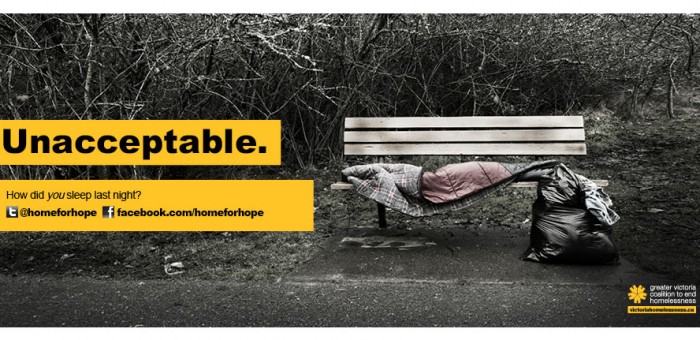Contributing Factors to Homelessness
“There is no one profile of a person who is experiencing homelessness,
just as there is no one path that leads there.”
Greater Victoria Coalition to End Homelessness
Contributing Factors of Homelessness
Homelessness is more than what you see on the street. Nothing has become more evident to me while researching for this blog series than this one simple fact.
While people often view homelessness as an issue specific to the downtown core, the hard truth is that poverty and homelessness can take on many forms in communities all across the region.
Whether it be a middle-aged man injured on the job and unable to work, a single mother trying to support three children on minimum-wage, a young person struggling with mental illness and unable to hold down a job, or a senior who can’t afford rent and groceries on her monthly pension, poverty and homelessness know no boundaries.
Just as there is no single face of homelessness, there is also no single contributor to homelessness. From mental illness and addiction to domestic violence, to the many challenges facing both on- and off-reserve aboriginal persons, several factors can lead to poverty and homelessness.
Here in Greater Victoria and throughout B.C., one of the most significant contributors to poverty and homelessness is the gap between income and housing costs. While average rent costs continue to rise, the resources available to low income households have not changed, making it increasingly difficult for many to afford adequate housing.
As of April 2013, the average monthly rent paid by someone on income assistance in Greater Victoria was $501. However, the monthly shelter allowance for a single individual receiving income assistance is only $375. This means that many individuals are forced to forgo other basic necessities, such as food, clothing and health-related expenses, in order to cover the cost of their rent.
Similarly, the gap between the living wage in Greater Victoria and the minimum wage here in B.C. is staggering.
The living wage in our region – “the wage that both parents in a two parent, two child family need to make in a 35 hour work week to maintain an adequate quality of life” – increased to $18.73 per hour in 2013. In the same year, the minimum wage in B.C.was only $10.25 per hour; $8.48 lower than the living wage.
In order to make a living wage and maintain an adequate quality of life, an average family of four would have to earn a monthly income of approximately $5,222.36; even then they would not be able to afford to care for an elderly relative or disabled family member, to own their own home, or to save for education or retirement.
In reality, most low-income families earn at or slightly above minimum wage, making it virtually impossible for them to afford the high costs of living and keeping them in a constant battle to remain housed.
Housing Need
Affordable and supportive housing is considered a key factor to combating homelessness by service providers. Since 2008, almost 250 new supportive housing units and over 450 new affordable housing units have been built across Greater Victoria. While this is progress, it is not enough. The Coalition estimates that in order to end homelessness in our region we need an additional 250 – 750 units of supportive housing and 1500 units of non-market and low-market affordable housing.
Meeting these housing needs requires funding commitments from all levels of government: federal, provincial, regional and municipal. And this is precisely what local housing groups have been tirelessly campaigning for. Affordable housing projects saw a slight boost in funding recently when the Canadian and British Columbia Governments announced that they were committing an additional investment of over $300 million over five years. While this certainly helps, more funding is still needed if we hope to end homelessness completely.
Weekly Action Item
With Christmas quickly approaching we thought we would choose an action item that helps alleviate hidden poverty in the context of the holiday season: Christmas Hampers.
High costs of living and limited financial resources mean that many families in Greater Victoria are unable to provide their children with the same holiday experiences that the rest of us are fortunate enough to enjoy. To provide these families with much-needed additional support during the holiday season, several organizations in Victoria run Christmas Hamper Programs. These hampers, which can include basic food, clothing, or even small gifts, make Christmas brighter for hundreds of families throughout the city.
Organizations that run Christmas Hamper Programs include the Mustard Seed, CFAX Santa’s Anonymous, and the Goldstream Food Bank, to name a few.
So, if it is within your means, please consider donating to one of the many Christmas Hamper Programs in your community.
But please also remember that while these hampers will help to alleviate some of the need over the holiday season, they are not a permanent solution. Child poverty continues to be on the rise in B.C. and more government action is needed at all levels if we hope to end this trend. I will be touching on many of these issues over the coming weeks, for now click here for other ways you can take action to reduce child poverty.
Sign-up for Future Posts
To receive future posts on addressing poverty and homelessness directly to your inbox, please sign-up below.
Comments are closed.




